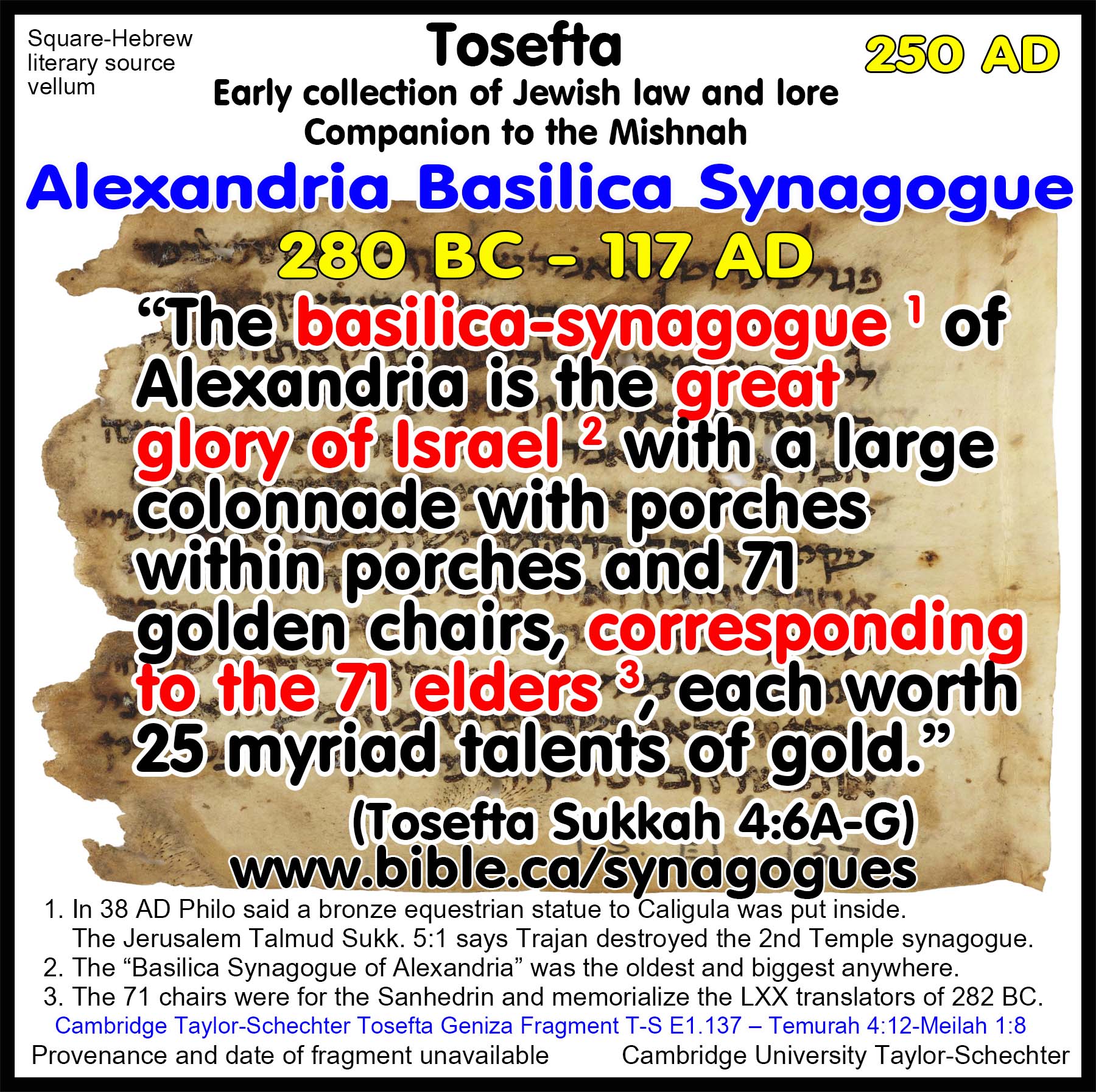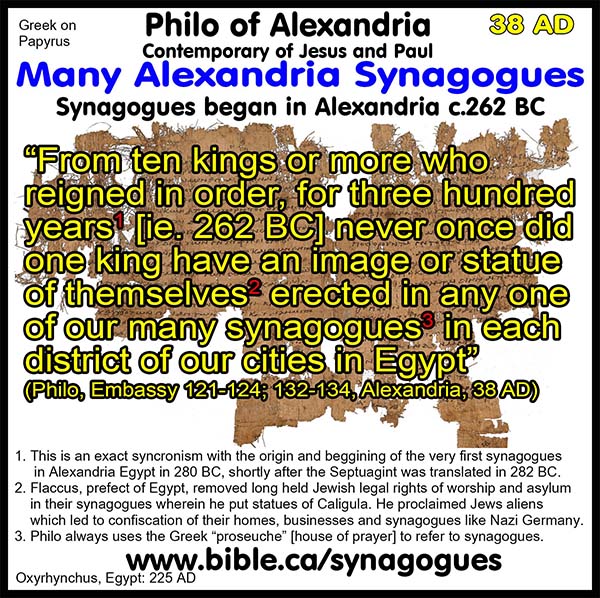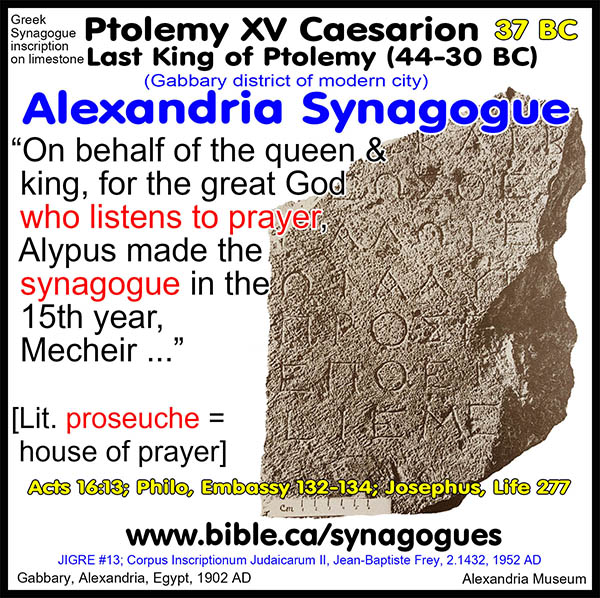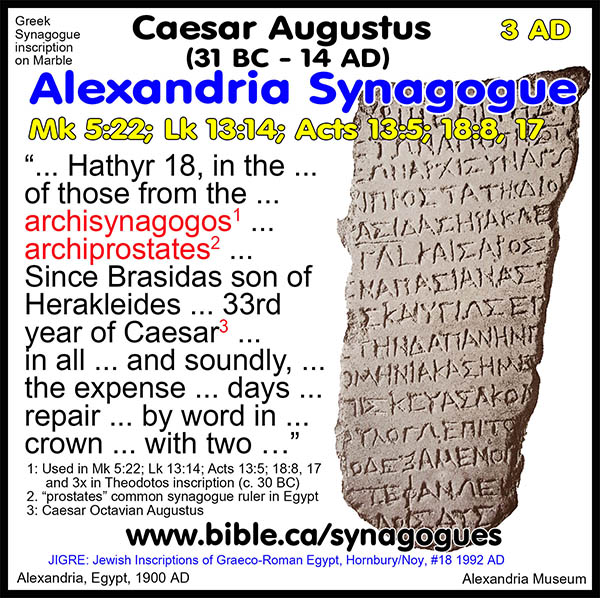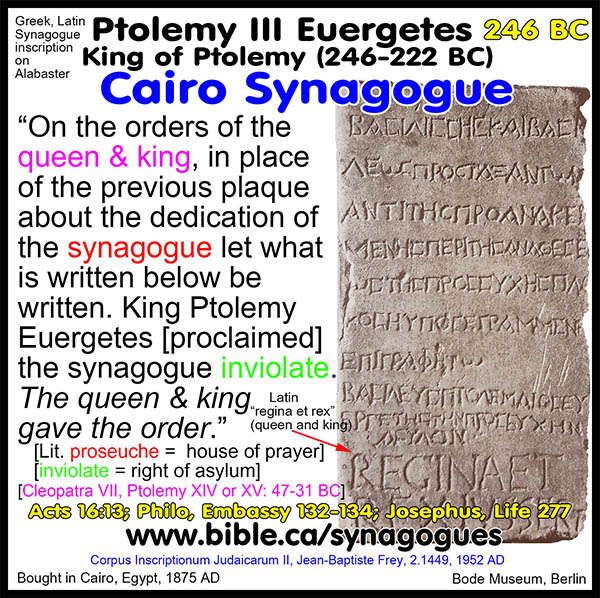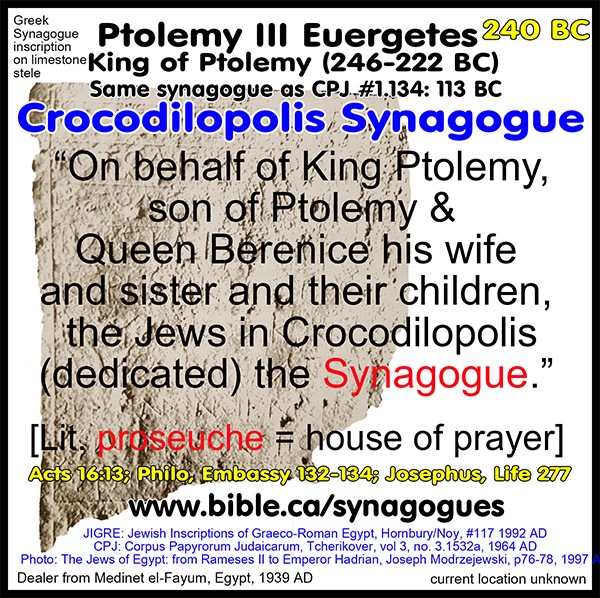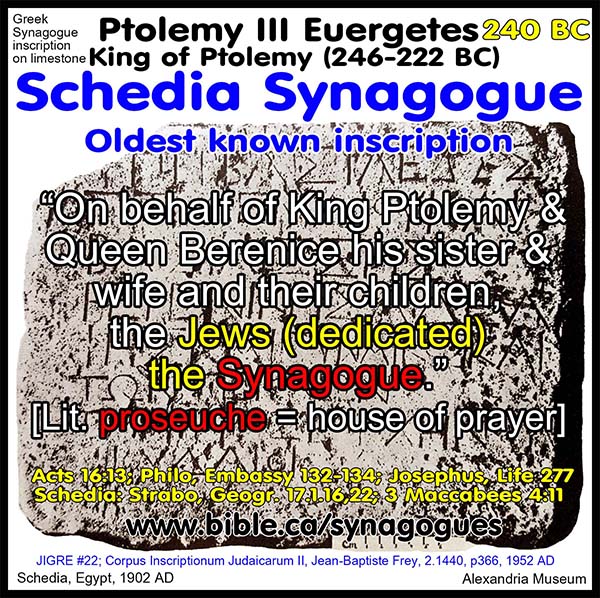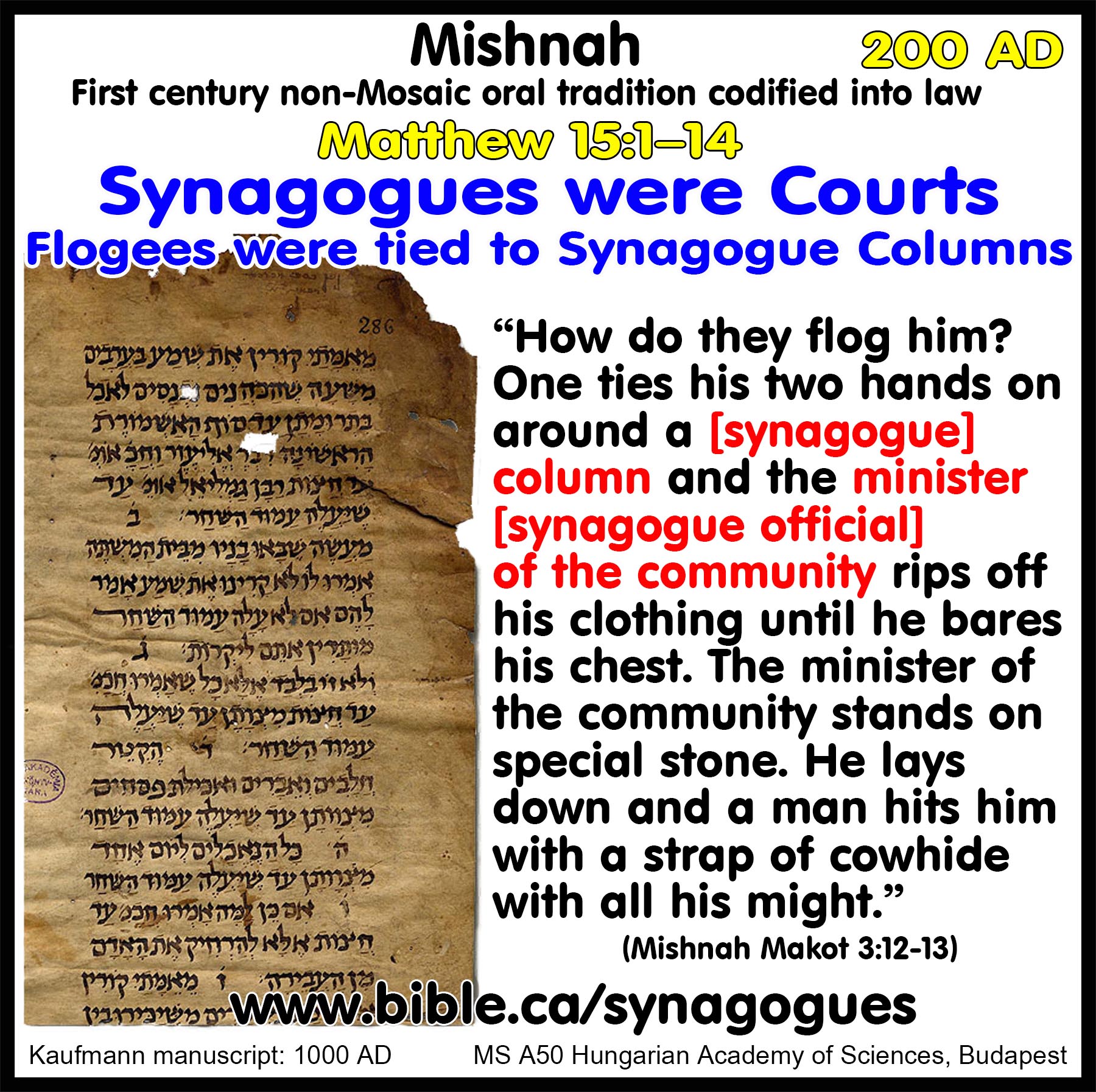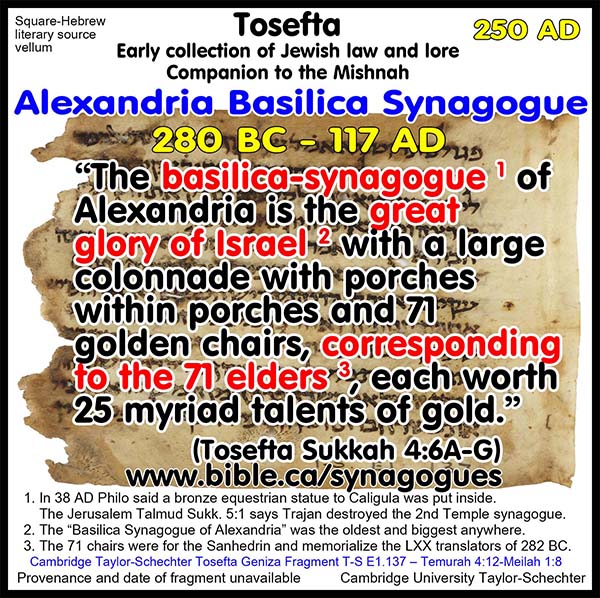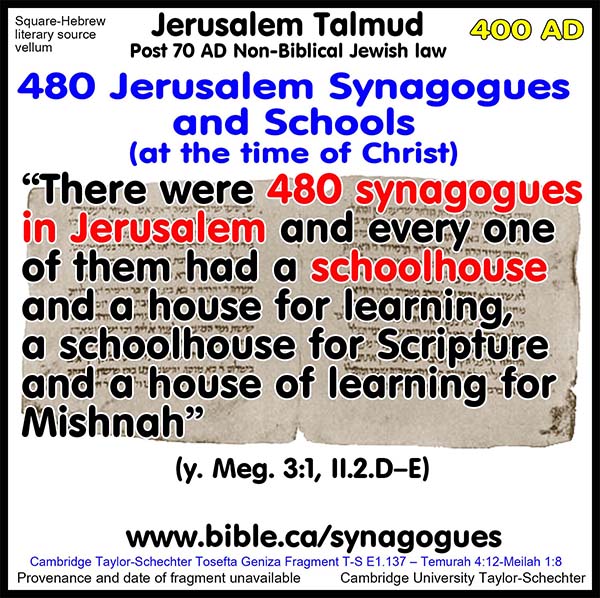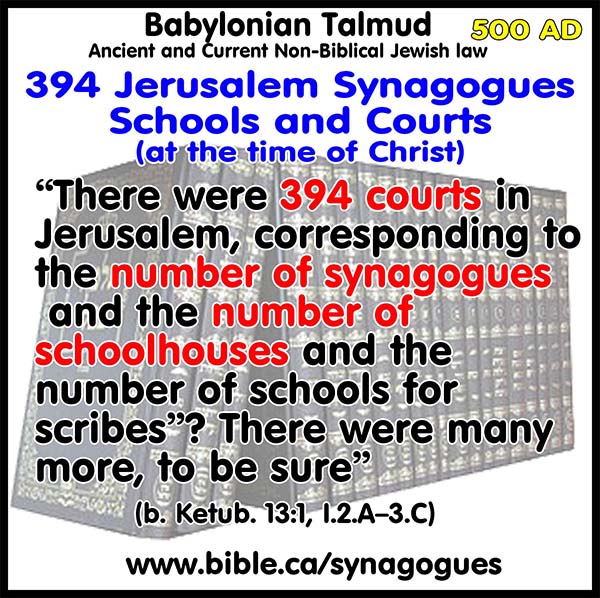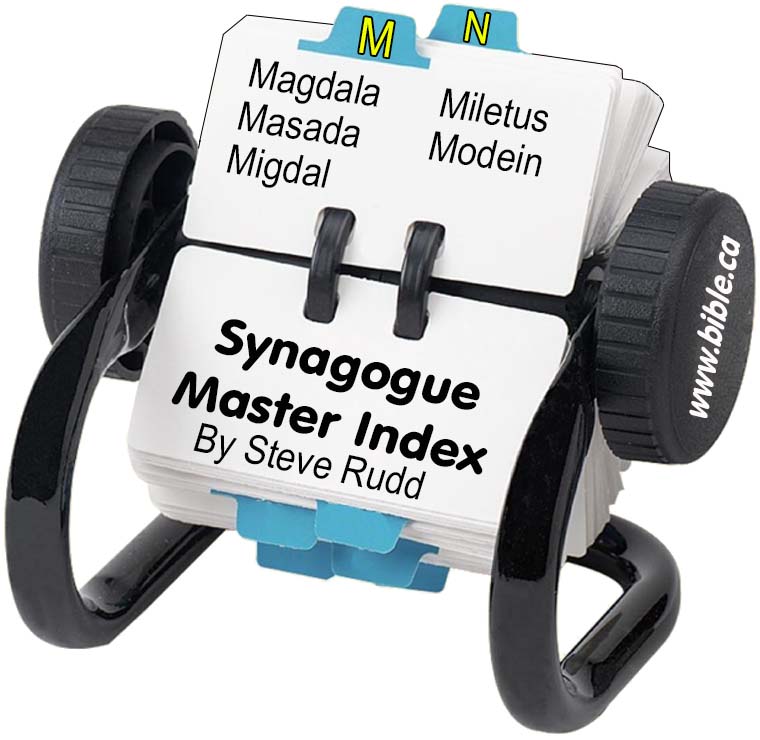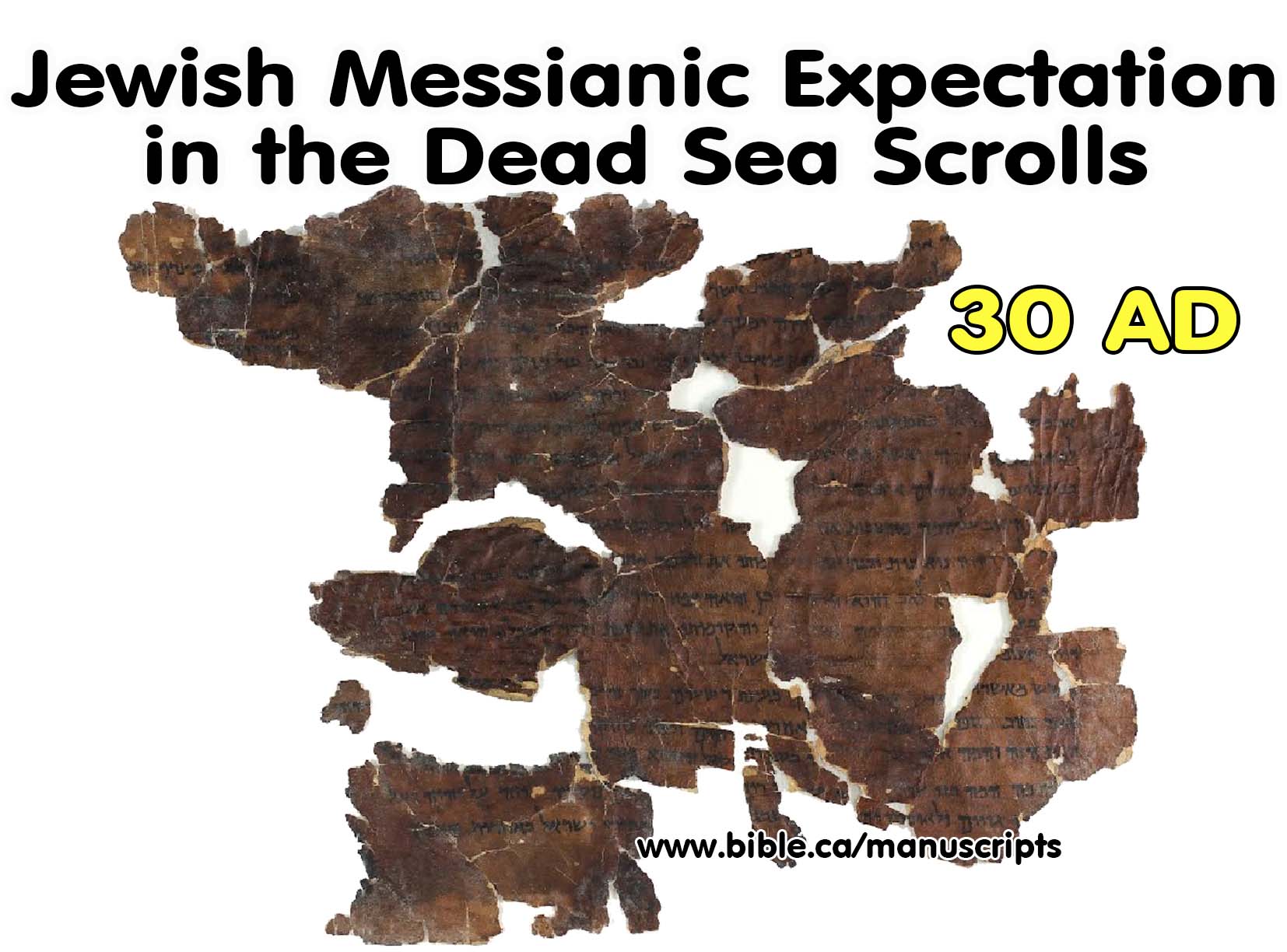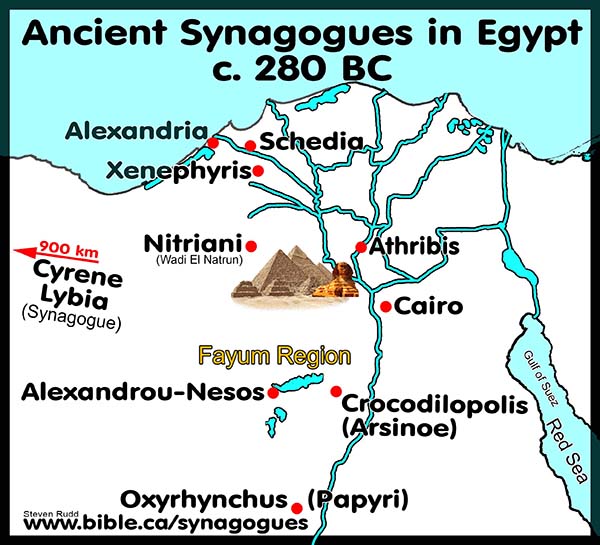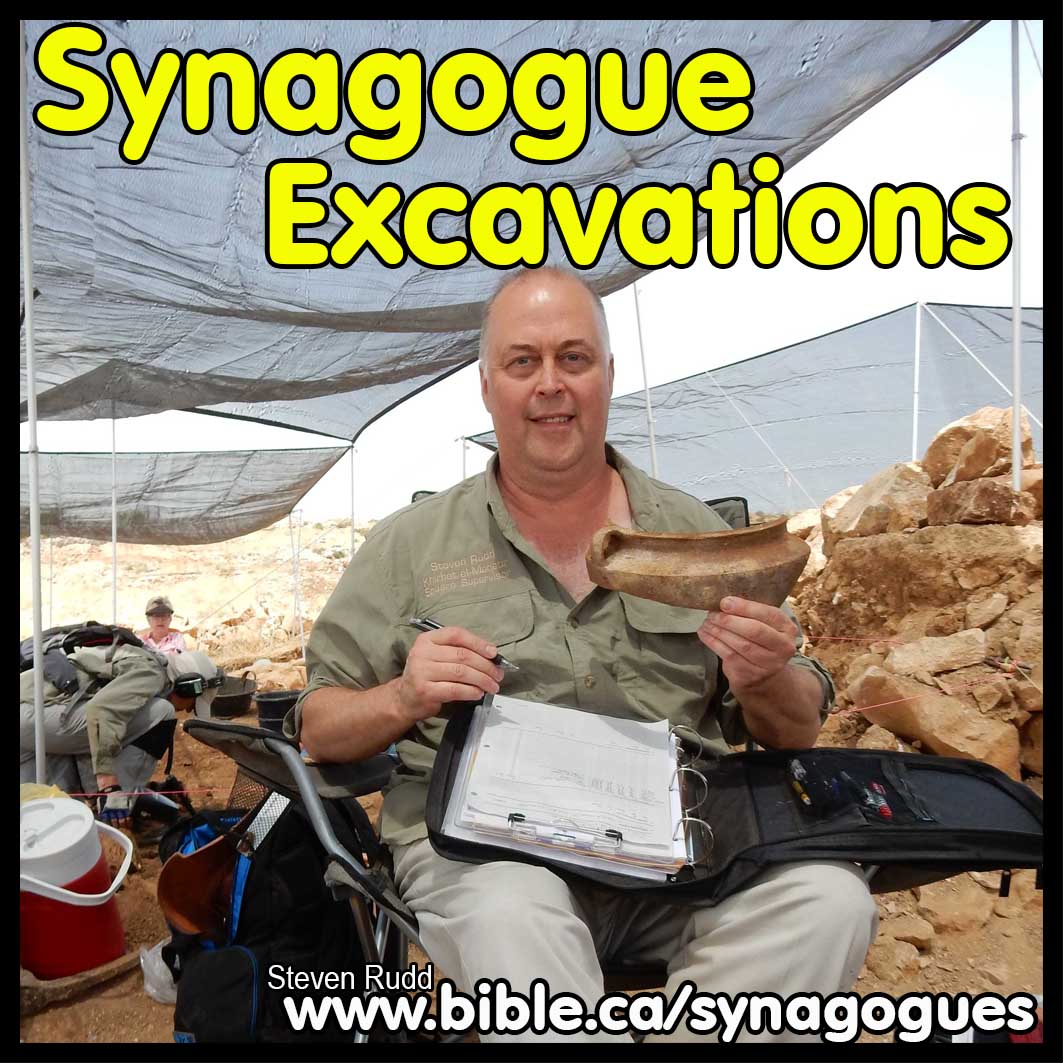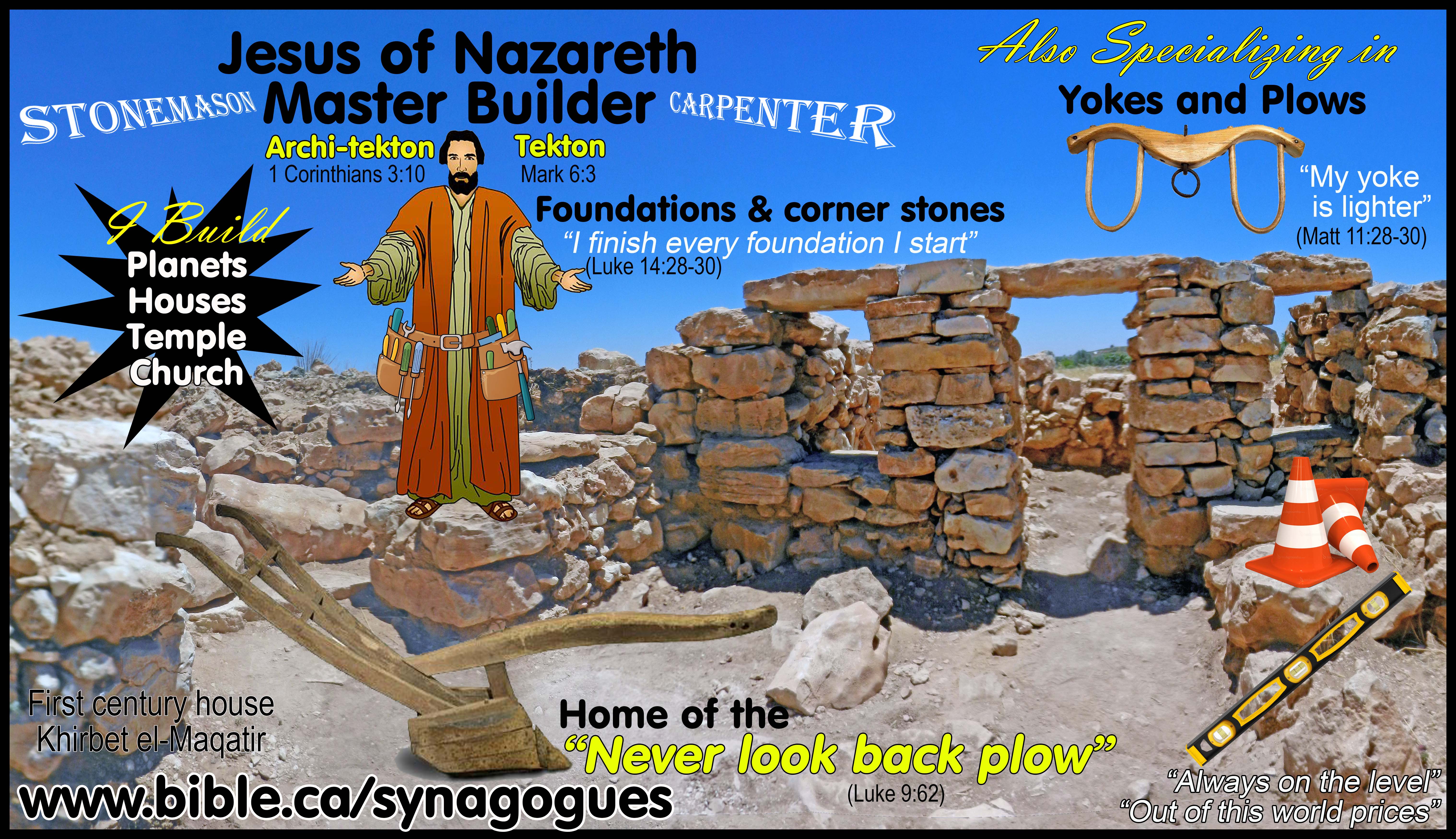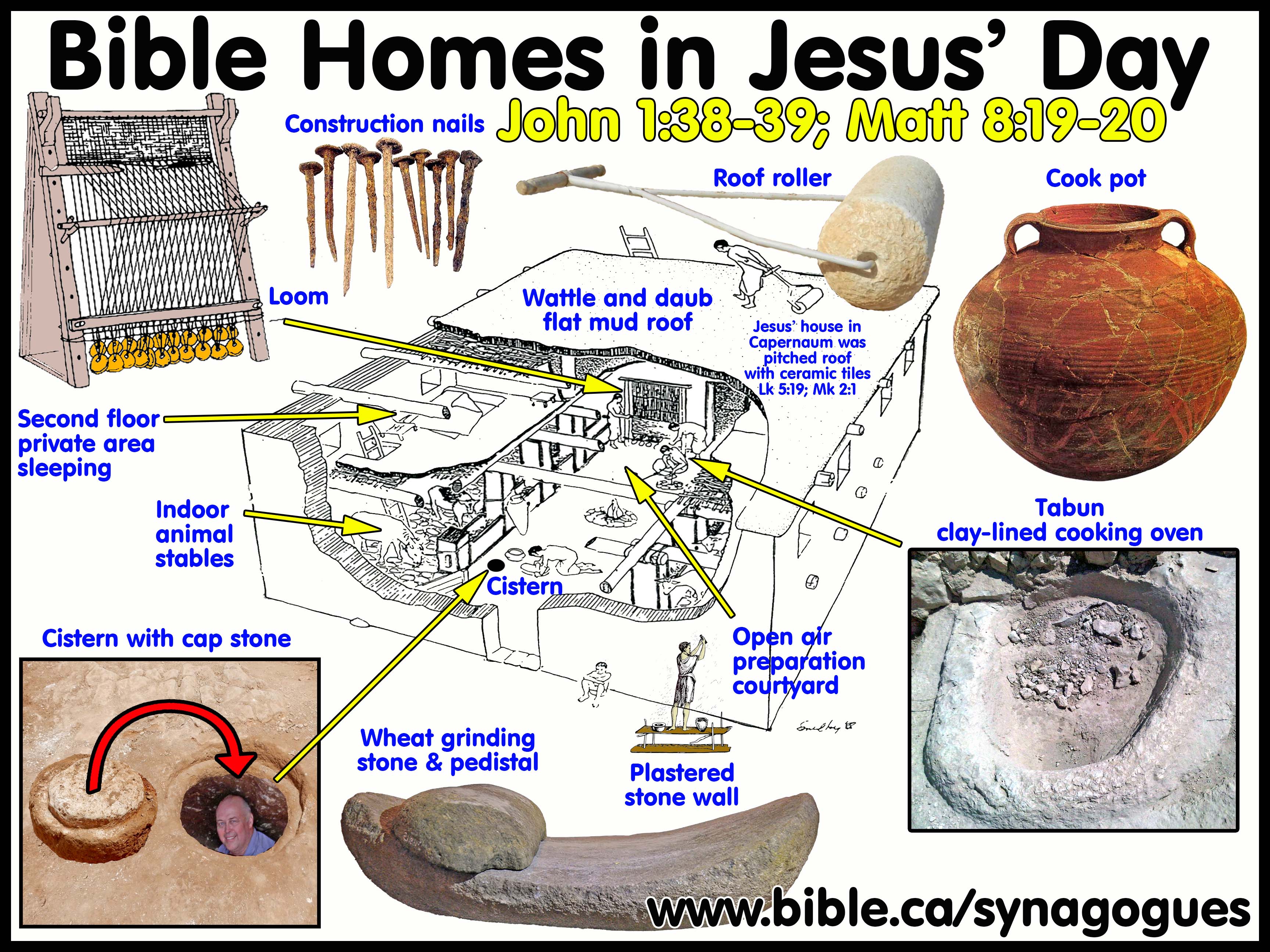Tosefta 250 AD
The Alexandria Synagogue of 40 AD Destroyed by Hadrian in 117 AD
Ancient Synagogue Literary Sources
Early collection of Jewish law and lore
Companion to the Mishnah
Tosephta, Tosepta
250 AD
“Out of Egypt did I call my Son”
Moses, Jesus, the church via Synagogues that began in Egypt in 280 BC
The photo above of
the ancient parchment is from
Cambridge Taylor-Schechter Tosefta Geniza
Fragment T-S E1.137 – Temurah 4:12-Meilah 1:8
The first and greatest synagogue in the world at Alexandria Egypt destroyed by Trajan:
“R. Jehudah says : Whoever has not seen the basilica-synagogue of Alexandria has never seen the great glory of Israel. It is something like a large colonnade with porches within porches, and accommodating sometimes double the number of those that followed Moses from Egypt. There were seventy-one golden chairs therein, corresponding to the seventy-one elders, and each of the chairs was worth twenty-five myriad talents of gold. In the centre was a wooden dais, and the sexton stood upon it with a scarf (as a flag) in his hand. At the close of each benediction he waved the scarf, and all the people answered Amen. The people were not seated together anyhow, but the goldsmiths were by themselves, the blacksmiths by themselves, the embroiderers by themselves ; so that when a poor man came in he joined himself to his fellow tradesmen, and in this way was enabled to obtain a means of livelihood. And the Levites with their harps and lyres and cymbals and all manner of musical instruments without number were there, saying, Behold, bless ye the Lord, all ye servants of the Lord. Some were saying, Lift up your hands to the sanctuary, and bless ye the Lord. When they parted they said to one another, The Lord bless thee out of Sion, and see thou the good of Jerusalem all the days of thy life ; yea, thou shalt see thy children's children.”” (Tosefta, Sukkah 4:6A-G, describing the second temple synagogue in Alexandria, 250 AD)
“The basilica-synagogue of Alexandria is the great glory of Israel with a large colonnade with porches within porches and seventy-one golden chairs, corresponding to the seventy-one elders, each worth twenty-five myriad talents of gold.”
I. History and content of the Tosefta:
1. “The Tosefta: Reaching closure some time, perhaps fifty years (hence c. a.d. 250), after the Mishnah, the Tosefta (“supplements”) provides a compilation of statements pertinent to rulings of the Mishnah or their problems or their themes. Some of these statements are freestanding, but most of them presuppose counterpart statements in the Mishnah and form commentaries to them. It follows that the Tosefta is a collection of statements on the general problems addressed in the Mishnah, ordered in large topical formations, or tractates, that correspond to those of the Mishnah and treating only the topics addressed in the Mishnah and no others. The document contains three kinds of materials, in descending order of frequency. The first is citation of a sentence of the Mishnah and a paraphrase and gloss of that sentence, thus, commentary in the simplest form; such writing is incomprehensible on its own but makes good sense in relationship to the Mishnah’s sentence, which defines its context and meaning. The second is freestanding sentence(s), which can be understood in their own terms but that, on closer reading, can be fully understood and shown to be coherent only when brought into juxtaposition with a counterpart statement in the Mishnah. The third is autonomous sets of sentences that make full and complete sense standing on their own, with no point of intersection with the Mishnah except in general topic. We do not need to open the Mishnah to understand the statements of such aggregates of cogent sentences, forming entirely coherent paragraphs.” (Dictionary of New Testament Background, Rabbinic Literature: Talmud, p895, 2000 AD)
2. “TOSEPHTA, TOSEPTA, TOSEFTA toh-sef´tuh [תּוֹסֶפְתָּא toseftaʾ]. Means “addition.” The Tosefta, an early collection of Jewish law and lore, is a companion volume to the MISHNAH. It was produced by the Sages at the beginning of the 3rd cent. ce, in Hebrew, in the land of Israel. The Tosefta is arranged just like the Mishnah: it is subdivided into orders, tractates, chapters, and individual paragraphs called halakhot (rulings; see HALAKHAH). It is about three to four times the size of the Mishnah. The Tosefta is available today in two principal editions: the complete Tosefta (Zuckermandel), and the first four orders of the Tosefta (Lieberman) as well as a complete English translation (Neusner). Like the Mishnah, the Tosefta comments on Jewish agricultural law, Jewish holidays, marital law, civil and criminal law, Temple offerings, and ritual purity. It contains more anecdotal material than the Mishnah and more haggadic exhortations (see HAGGADAH). The two versions of the TALMUD often cite passages from the Tosefta—in a somewhat modified version—in order to explain and augment the Mishnah. On occasion, the Talmud favors the Tosefta over the Mishnah and forces the Mishnah to align itself with the rulings of the Tosefta.” (New Interpreter’s Dictionary of the Bible, Tosefta, Vol. 5, p632, 2009 AD)
3. “Tosefta (תּוֹסֶפְתָּא, tosephta'). A supplementary work to the Jewish Mishnah, completed fifty years later in the third (possibly fourth) century ad. The Tosefta follows the same structure as the Mishnah and is often attributed to Rabbi Hiyya and to Rabbi Hoshayah, his student. The literary relationship between the Tosefta and the Talmud is debated, though there is considerable overlap between them. In addition to being relevant for the study of Judaism of its own period, the Tosefta is likewise relevant to the study of Judaism in Jesus’ and the apostles’ lifetimes.” (Lexham Bible Dictionary, Tosefta, 2016 AD)
II. The Second Temple basilica-synagogue of Alexandria: 380 BC- 117 AD (destroyed by Trajan)
A. Philo Dates the origin of synagogues to 262 BC through the Alexandrian persecution of Jews in 38 AD:
|
See: Philo 38 AD For many more details on the Great Basilica Synagogue of Alexandria 380 BC – 177 AD |
1. Its size and architectural wealth are evidence of a long and important history and pre-eminence as the first synagogue every founded.
a. Philo said this basilica synagogue was in full operation in 38 AD.
b. The Jerusalem Talmud said it was destroyed by Trajan. (117 AD)
c. The largest and most elaborate synagogue is where they began in Alexandria!
d. This is powerful evidence for the origin of Synagogues in Alexandria.
e. There are no inscriptions or references of any kind of any synagogues in Babylon.
f. The largest and most beautiful and expensive synagogue in 38 AD, was not in Judea or Syria or Babylon, it was in Alexandria Egypt as a testament for an obvious continuous occupation that dates back to 280 BC!
2. Text of Philo, Embassy/Legat. 132-139, Alexandria, 41-45 AD: “they set up in every one of them images of Gaius [Caligula], and in the largest, and most famous, and most celebrated [The Great Alexandria Synagogue] of them they erected a brazen statue of him borne on a four-horse chariot. … For, in the first place, one may derive them from about ten kings or more who reigned in order, one after another, for three hundred years [ie. Since 262 BC when they began in Alexandria], and who never once had any images or statues of themselves erected in our synagogues, though there were many of their relations and kinsmen whom they considered, and registered as, and spoke of as gods.” (Philo, Embassy/Legat. 132-139, Alexandria, 41-45 AD)
a. This amazing statement from Philo shows that when statues of Caligula were set up in all the Alexandrian synagogues, including the Great Synagogue of Alexandria in 38 AD, that this violated the sanctuary off limits refuge status that dates back 300 years to Ptolemy II/III in 262 BC.
3. The complaint of Philo of “for 300 years” echoes the statement of Jephthah:
a. "‘While Israel lived in Heshbon and its villages, and in Aroer and its villages, and in all the cities that are on the banks of the Arnon, three hundred years, why did you not recover them within that time?" (Judges 11:26)
b. We use the Judges 11:26 passage to date the conquest because Jephthah lived in 1100 BC + 300 years =1400 BC.
c. Likewise we can date the origin of synagogues with Philo’s “300 years” statement.
d. Philo said in 38 AD, not a single ruler in a succession of 10 or more back in time, even 300 years has ever set up a statue of himself in a synagogue.
e. 38 AD – 300 years = 262 BC.
4. Synagogues began in 280 BC in Alexandria:
a. We know from inscriptions and the translating of the Septuagint in 282 BC, that synagogues began in Alexandria as a direct cause and effect outcome of the Septuagint.
b. For the first time, the Greek only speaking Alexandrian Jews had the Torah in a “Jerusalem certified” translation of the Hebrew Bible.
c. Synagogues followed the distribution of the Septuagint throughout the diaspora Jewish community.
d. The earliest inscriptions are in Egypt.
e. The most number of inscriptions of any city is Alexandria.
f. The THREE OLDEST synagogue inscriptions ever found are all dedicated to and thank Ptolemy III. The earliest synagogue inscriptions give high praise to Ptolelmy III for granting the Jews “sanctuary” rights and allowed them to build synagogues.
B. Four ancient sources of documentation for the second temple (40 AD) basilica-synagogue of Alexandria:
1. Text of Philo, Embassy/Legat. 132-139, Alexandria, 41-45 AD: “(132) But as the governor of the country [Flaccus], who by himself could, if he had chosen to do so, have put down the violence of the multitude in a single hour, pretended not to see what he did see, and not to hear what he did hear, but allowed the mob to carry on the war against our people without any restraint, and threw our former state of tranquillity into confusion, the populace being excited still more, proceeded onwards to still more shameless and more audacious designs and treachery, and, arraying very numerous companies, cut down some of the synagogues (and there are a great many in every section of the city), and some they razed to the very foundations, and into some they threw fire and burnt them, in their insane madness and frenzy, without caring for the neighbouring houses; for there is nothing more rapid than fire, when it lays hold of fuel. (133) I omit to mention the ornaments in honour of the emperor, which were destroyed and burnt with these synagogues, such as gilded shields, and gilded crowns, and pillars, and inscriptions, for the sake of which they ought even to have abstained from and spared the other things; but they were full of confidence, inasmuch as they did not fear any chastisement at the hand of Gaius, as they well knew that he cherished an indescribable hatred against the Jews, so that their opinion was that no one could do him a more acceptable service than by inflicting every description of injury on the nation which he hated; (134) and, as they wished to curry favour with him by a novel kind of flattery, so as to allow, and for the future to give the rein to, every sort of ill treatment of us without ever being called to account, what did they proceed to do? All the synagogues that they were unable to destroy by burning and razing them to the ground, because a great number of Jews lived in a dense mass in the neighbourhood, they injured and defaced in another manner, simultaneously with a total overthrow of their laws and customs; for they set up in every one of them images of Gaius [Caligula], and in the largest, and most famous, and most celebrated [The Great Alexandria Synagogue] of them they erected a brazen statue of him borne on a four-horse chariot. (135) And so excessive and impetuous was the rapidity of their zeal, that, as they had not a new chariot for four horses ready, they got a very old one out of the gymnasium, full of poison, mutilated in its ears, and in the hinder part, and in its pedestal, and in many other points, and as some say, one which had already been dedicated in honour of a woman, the eminent Cleopatra, who was the great grandmother of the last. (136) Now what amount of accusation he brought against those who had dedicated this chariot on this very account is notorious to every one; for what did it signify if it was a new one and belonging to a woman? Or what if it was an old one and belonging to a man? And what, in short, if it was wholly dedicated to the name of some one else? Was it not natural that those who were offering up a chariot of this sort on behalf of the emperor should be full of cautious fear, lest some one might lay an information against them before our emperor, who took such especial care that every thing which at all affected or related to himself should be done in the most dignified manner possible? (137) But these men expected to be most extravagantly praised, and to receive greater and more conspicuous advantages as rewards for their conduct, in thus dedicating the synagogues to Gaius as new pieces of consecrated ground, not because of the honour which was done to him by this proceeding, but because in this way they exhausted every possible means of insulting and injuring our nation. (138) And one may find undeniable and notorious proofs of this having been the case. For, in the first place, one may derive them from about ten kings or more who reigned in order, one after another, for three hundred years [ie. Since 262 BC when they began in Alexandria], and who never once had any images or statues of themselves erected in our synagogues, though there were many of their relations and kinsmen whom they considered, and registered as, and spoke of as gods. (139) And what would they not have done in the case of those whom they looked upon as men? a people who look upon dogs, and wolves, and lions, and crocodiles, and numerous other beasts, both terrestrial and aquatic, and numerous birds, as gods, and erect in their honour altars, and temples, and shrines, and consecrated precincts, throughout the whole of Egypt?” (Philo, Embassy/Legat. 132-139, Alexandria, 41 AD)
3. Text of Jerusalem Talmud, y. Sukk. 5:1, I.5.A–H: “It has been taught [in Tosefta Sukkah 4:6A-G, 250 AD]: Said R. Judah, “Whoever has never seen the double colonnade [the basilica-synagogue] of Alexandria in Egypt has never seen Israel’s glory in his entire life. [B] “It was a kind of large basilica, with one colonnade inside another. [C] “Sometimes there were [55b] twice as many people there as those who went forth from Egypt. [D] “Now there were seventy-one [Y.: seventy] golden thrones set up there, one for each of the seventy-one elders, each one worth twenty-five talents of gold, with a wooden platform in the middle. [E] “The minister of the synagogue stands on it, with flags in his hand. When one began to read, the other would wave the flags so the people would answer, ‘Amen,’ for each and every blessing. Then that one would wave the flags, and they would answer, ‘Amen.’ [F] “They did not sit in a jumble, but the goldsmiths sat by themselves, the silversmiths by themselves, the weavers by themselves, the bronze-workers by themselves, and the blacksmiths by themselves. [G] “All this why? So that when a traveller came along, [he could find his fellow craftsmen,] and on that basis he could gain a living” [T. Suk. 4:6]. [H] And who destroyed it all? It was the evil Trajan.” (Jerusalem Talmud, y. Sukk. 5:1, I.5.A–H, describing the second temple synagogue in Alexandria, 400 AD)
4. Text of Babylonian Talmud, b. Sukk. 5:1d, I.2.A–H: “It has been taught on Tannaite authority: B. Said R. Judah, “Whoever has never seen the double colonnade [the basilica-synagogue] of Alexandria in Egypt has never seen Israel’s glory.” C. They said it was a kind of large basilica, with one colonnade inside another. D. Sometimes there were twice as many people there as those who went forth from Egypt. Egypt. Now there were seventy-one golden thrones set up there, one for each of the seventy-one elders of the Great Sanhedrin, each one worth twenty-one talents of gold, with a wooden platform in the middle. F. The minister of the synagogue stands on it, with flags in his hand. When [one began to read, and] it came time to answer, “Amen,” the other would wave the flags so the people would answer, “Amen,” for each and every blessing. Then that one would wave the flags, and they would answer, “Amen.” G. They did not sit in a jumble, but the goldsmiths sat by themselves, the silversmiths by themselves, the weavers by themselves, the bronze-workers by themselves, and the blacksmiths by themselves. H. All this why? So that when a poor traveller came along, he could find his fellow craftsmen, and on that basis he could gain a living for himself and his family” [T. Suk. 4:6A–G]. (Babylonian Talmud, b. Sukk. 5:1d, I.2.A–H, describing the second temple synagogue in Alexandria, 500 AD)
1. Philo says that in 38 AD, that the pagan Egyptians in Alexandria set up four living horses and a chariot at a symbol of Caligula in “the largest, and most famous, and most celebrated” synagogue in Alexandria: the Basilica Synagogue.
2. Text of Philo, Embassy/Legat. 132-139, Alexandria, 41-45 AD: “All the synagogues that they were unable to destroy by burning and razing them to the ground, because a great number of Jews lived in a dense mass in the neighbourhood, they injured and defaced in another manner, simultaneously with a total overthrow of their laws and customs; for they set up in every one of them images of Gaius [Caligula], and in the largest, and most famous, and most celebrated [The Great Alexandria Synagogue] of them they erected a brazen statue of him borne on a four-horse chariot.” (Philo, Embassy/Legat. 132-139, Alexandria, 41-45 AD)
3. Text of Jerusalem Talmud, y. Sukk. 5:1, I.5.A–H: “Whoever has never seen the double colonnade [the basilica-synagogue] of Alexandria in Egypt has never seen Israel’s glory in his entire life. [B] “It was a kind of large basilica, with one colonnade inside another. … And who destroyed it all? It was the evil Trajan.” (Jerusalem Talmud, y. Sukk. 5:1, I.5.A–H, describing the second temple synagogue in Alexandria, 400 AD)
D. Description of the Great Synagogue in Alexandria:
1. 40 AD: Second Temple “Basilica-style” Synagogue in Alexandria (destroyed by Titus in 117 AD):
a. The basilica style synagogue dates to the early first century AD (before 40AD) and this is a departure from the triclinium style synagogues that date back to the very beginning in 280 BC. Even though we have no excavated site top plans for any synagogue in Egypt, we do have many in both and outside Judea that are all triclinium style.
b. Text of Philo, Embassy/Legat. 132-139, Alexandria, 41-45 AD: All the synagogues [many in Alexandria] that they were unable to destroy by burning and razing them to the ground, because a great number of Jews lived in a dense mass in the neighbourhood, they injured and defaced in another manner, simultaneously with a total overthrow of their laws and customs; for they set up in every one of them images of Gaius [Caligula], and in the largest, and most famous, and most celebrated [The Great Alexandria Synagogue] of them they erected a brazen statue of him borne on a four-horse chariot.” (Philo, Embassy/Legat. 132-139, Alexandria, 41-45 AD)
c. Text of Tosefta, Sukkah 4:6A-G: “R. Jehudah says : Whoever has not seen the basilica-synagogue of Alexandria has never seen the great glory of Israel. It is something like a large colonnade with porches within porches, and accommodating sometimes double the number of those that followed Moses from Egypt. There were seventy-one golden chairs therein, corresponding to the seventy-one elders, and each of the chairs was worth twenty-five myriad talents of gold.” (Tosefta, Sukkah 4:6A-G, describing the second temple synagogue in Alexandria, 250 AD)
d. Text of Jerusalem Talmud, y. Sukk. 5:1, I.5.A–H: “It has been taught [in Tosefta Sukkah 4:6A-G, 250 AD]: Said R. Judah, “Whoever has never seen the double colonnade [the basilica-synagogue] of Alexandria in Egypt has never seen Israel’s glory in his entire life. [B] “It was a kind of large basilica, with one colonnade inside another. [C] “Sometimes there were [55b] twice as many people there as those who went forth from Egypt. [D] “Now there were seventy-one [Y.: seventy] golden thrones set up there, one for each of the seventy-one elders, each one worth twenty-five talents of gold … And who destroyed it all? It was the evil Trajan.” (Jerusalem Talmud, y. Sukk. 5:1, I.5.A–H, describing the second temple synagogue in Alexandria, 400 AD)
e. Text of Babylonian Talmud, b. Sukk. 5:1d, I.2.A–H: “It has been taught on Tannaite authority: B. Said R. Judah, “Whoever has never seen the double colonnade [the basilica-synagogue] of Alexandria in Egypt has never seen Israel’s glory.” C. They said it was a kind of large basilica, with one colonnade inside another. D. Sometimes there were twice as many people there as those who went forth from Egypt. E. Now there were seventy-one golden thrones set up there, one for each of the seventy-one elders of the Great Sanhedrin, each one worth twenty-one talents of gold]. (Babylonian Talmud, b. Sukk. 5:1d, I.2.A–H, describing the second temple synagogue in Alexandria, 500 AD)
2. 71 gold thrones for each of the Sanhedrin in Jerusalem and a tribute to the 70 translators of the Septuagint in Alexandria Synagogue:
a. Text of Tosefta, Sukkah 4:6A-G: “R. Jehudah says : Whoever has not seen the basilica-synagogue of Alexandria … There were seventy-one golden chairs therein, corresponding to the seventy-one elders, and each of the chairs was worth twenty-five myriad talents of gold.” (Tosefta, Sukkah 4:6A-G, describing the second temple synagogue in Alexandria, 250 AD)
b. Text of Jerusalem Talmud, y. Sukk. 5:1, I.5.A–H: “It has been taught [in Tosefta Sukkah 4:6A-G, 250 AD]: Said R. Judah, “Whoever has never seen the double colonnade [the basilica-synagogue] of Alexandria in Egypt has never seen Israel’s glory in his entire life. “Now there were seventy-one [Y.: seventy] golden thrones set up there, one for each of the seventy-one elders, each one worth twenty-five talents of gold,… And who destroyed it all? It was the evil Trajan.” (Jerusalem Talmud, y. Sukk. 5:1, I.5.A–H, describing the second temple synagogue in Alexandria, 400 AD)
c. Text of Babylonian Talmud, b. Sukk. 5:1d, I.2.A–H: “It has been taught on Tannaite authority: B. Said R. Judah, “Whoever has never seen the double colonnade [the basilica-synagogue] of Alexandria in Egypt has never seen Israel’s glory.”… Now there were seventy-one golden thrones set up there, one for each of the seventy-one elders of the Great Sanhedrin, each one worth twenty-one talents of gold” (Babylonian Talmud, b. Sukk. 5:1d, I.2.A–H, describing the second temple synagogue in Alexandria, 500 AD)
3. Nehemiah’s Bema platform for the reader to stand on in Alexandria Synagogue:
a. Text of Tosefta, Sukkah 4:6A-G: “R. Jehudah says : Whoever has not seen the basilica-synagogue of Alexandria has never seen the great glory of Israel… In the centre was a wooden dais, and the sexton stood upon it with a scarf (as a flag) in his hand. At the close of each benediction he waved the scarf, and all the people answered Amen.”” (Tosefta, Sukkah 4:6A-G, describing the second temple synagogue in Alexandria, 250 AD)
b. Text of Jerusalem Talmud, y. Sukk. 5:1, I.5.A–H: “It has been taught [in Tosefta Sukkah 4:6A-G, 250 AD]: Said R. Judah, “Whoever has never seen the double colonnade [the basilica-synagogue] of Alexandria in Egypt has never seen Israel’s glory in his entire life. “Now there were seventy-one [Y.: seventy] golden thrones set up there, one for each of the seventy-one elders, each one worth twenty-five talents of gold, with a wooden platform in the middle. [E] “The minister of the synagogue stands on it, with flags in his hand. When one began to read, the other would wave the flags so the people would answer, ‘Amen,’ for each and every blessing. Then that one would wave the flags, and they would answer, ‘Amen.’ And who destroyed it all? It was the evil Trajan.” (Jerusalem Talmud, y. Sukk. 5:1, I.5.A–H, describing the second temple synagogue in Alexandria, 400 AD)
c. Text of Babylonian Talmud, b. Sukk. 5:1d, I.2.A–H: “It has been taught on Tannaite authority: B. Said R. Judah, “Whoever has never seen the double colonnade [the basilica-synagogue] of Alexandria in Egypt has never seen Israel’s glory.”… Now there were seventy-one golden thrones set up there, one for each of the seventy-one elders of the Great Sanhedrin, each one worth twenty-one talents of gold, with a wooden platform in the middle. F. The minister of the synagogue stands on it, with flags in his hand. When [one began to read, and] it came time to answer, “Amen,” the other would wave the flags so the people would answer, “Amen,” for each and every blessing. Then that one would wave the flags, and they would answer, “Amen.”” (Babylonian Talmud, b. Sukk. 5:1d, I.2.A–H, describing the second temple synagogue in Alexandria, 500 AD)
4. Seating hierarchy on synagogue Benches grouped by trade and age:
a. Text of Philo: “Now these laws they are taught at other times, indeed, but most especially on the seventh day, for the seventh day is accounted sacred, on which they abstain from all other employments, and frequent the sacred places which are called synagogues [house of prayer], and there they sit according to their age in classes [ie. by trade], the younger sitting under the elder, and listening with eager attention in becoming order.” (Philo, Good Man 81)
b. Text of Tosefta, Sukkah 4:6A-G: “R. Jehudah says: Whoever has not seen the basilica-synagogue of Alexandria … The people were not seated together anyhow, but the goldsmiths were by themselves, the blacksmiths by themselves, the embroiderers by themselves ; so that when a poor man came in he joined himself to his fellow tradesmen, and in this way was enabled to obtain a means of livelihood. And the Levites with their harps and lyres and cymbals and all manner of musical instruments without number were there, saying, Behold, bless ye the Lord, all ye servants of the Lord. Some were saying, Lift up your hands to the sanctuary, and bless ye the Lord. When they parted they said to one another, The Lord bless thee out of Sion, and see thou the good of Jerusalem all the days of thy life ; yea, thou shalt see thy children's children.”” (Tosefta, Sukkah 4:6A-G, describing the second temple synagogue in Alexandria, 250 AD)
c. Text of Jerusalem Talmud, y. Sukk. 5:1, I.5.A–H: “It has been taught [in Tosefta Sukkah 4:6A-G, 250 AD]: Said R. Judah, “Whoever has never seen the double colonnade [the basilica-synagogue] of Alexandria in Egypt has never seen Israel’s glory in his entire life. [B] “It was a kind of large basilica, with one colonnade inside another. [C] “Sometimes there were [55b] twice as many people there as those who went forth from Egypt. [D] “Now there were seventy-one [Y.: seventy] golden thrones set up there, one for each of the seventy-one elders, each one worth twenty-five talents of gold, with a wooden platform in the middle. [E] “The minister of the synagogue stands on it, with flags in his hand. When one began to read, the other would wave the flags so the people would answer, ‘Amen,’ for each and every blessing. Then that one would wave the flags, and they would answer, ‘Amen.’ [F] “They did not sit in a jumble, but the goldsmiths sat by themselves, the silversmiths by themselves, the weavers by themselves, the bronze-workers by themselves, and the blacksmiths by themselves. [G] “All this why? So that when a traveller came along, [he could find his fellow craftsmen,] and on that basis he could gain a living” [T. Suk. 4:6]. [H] And who destroyed it all? It was the evil Trajan.” (Jerusalem Talmud, y. Sukk. 5:1, I.5.A–H, describing the second temple synagogue in Alexandria, 400 AD)
d. Text of Babylonian Talmud, b. Sukk. 5:1d, I.2.A–H: “It has been taught on Tannaite authority: B. Said R. Judah, “Whoever has never seen the double colonnade [the basilica-synagogue] of Alexandria in Egypt has never seen Israel’s glory.” C. They said it was a kind of large basilica, with one colonnade inside another. D. Sometimes there were twice as many people there as those who went forth from Egypt. E. Now there were seventy-one golden thrones set up there, one for each of the seventy-one elders of the Great Sanhedrin, each one worth twenty-one talents of gold, with a wooden platform in the middle. F. The minister of the synagogue stands on it, with flags in his hand. When [one began to read, and] it came time to answer, “Amen,” the other would wave the flags so the people would answer, “Amen,” for each and every blessing. Then that one would wave the flags, and they would answer, “Amen.” G. They did not sit in a jumble, but the goldsmiths sat by themselves, the silversmiths by themselves, the weavers by themselves, the bronze-workers by themselves, and the blacksmiths by themselves. H. All this why? So that when a poor traveller came along, he could find his fellow craftsmen, and on that basis he could gain a living for himself and his family” [T. Suk. 4:6A–G]. (Babylonian Talmud, b. Sukk. 5:1d, I.2.A–H, describing the second temple synagogue in Alexandria, 500 AD)
5. Synagogues enjoyed legislative formal protection as refugee/asylum/sanctuary “off limits to non-Jews” status: 300 years old!
a. Since 280 BC when they began in Alexandria, synagogues were considered sanctuary’s that were out of bounds for non-Jews based upon formal proclamations by Ptolemy II, III, IV and Julias Caesar.
b. This three hundred year old sanctuary status that dates back to the genesis of synagogues (280 BC) was violated for the first time around 40 AD when Flaccus encouraged the pagan Egyptians to set up statues of Caligula in the synagogues of Egypt, including an old bronze equestrian display with four horses and a chariot being set up in the very first and greatest [basilica] synagogue of Alexandra.
c. And one may find undeniable and notorious proofs of this having been the case. For, in the first place, one may derive them from about ten kings or more who reigned in order, one after another, for three hundred years [ie. 262 BC], and who never once had any images or statues of themselves erected in our synagogues, though there were many of their relations and kinsmen whom they considered, and registered as, and spoke of as gods. (139) And what would they not have done in the case of those whom they looked upon as men? a people who look upon dogs, and wolves, and lions, and crocodiles, and numerous other beasts, both terrestrial and aquatic, and numerous birds, as gods, and erect in their honour altars, and temples, and shrines, and consecrated precincts, throughout the whole of Egypt?” (Philo, Embassy/Legat. 138-139, Alexandria, 41-45 AD)
6. Instrumental music in the Basilica synagogue in Alexandria:
a. What is fascinating about this is that Judean synagogues never used instrumental music.
b. The basilica style synagogue dates to the early first century AD (before 40AD) and this is a departure from the triclinium style synagogues that date back to the very beginning in 280 BC. Even though we have no excavated site top plans for any synagogue in Egypt, we do have many in both and outside Judea that are all triclinium style. The change to basilica probably ushered in the instrumental music, but this is speculative.
c. Text of Tosefta, Sukkah 4:6A-G: “R. Jehudah says: Whoever has not seen the basilica-synagogue of Alexandria … And the Levites with their harps and lyres and cymbals and all manner of musical instruments without number were there, saying, Behold, bless ye the Lord, all ye servants of the Lord. Some were saying, Lift up your hands to the sanctuary, and bless ye the Lord. When they parted they said to one another, The Lord bless thee out of Sion, and see thou the good of Jerusalem all the days of thy life ; yea, thou shalt see thy children's children.”” (Tosefta, Sukkah 4:6A-G, describing the second temple synagogue in Alexandria, 250 AD)
III. General Synagogue exerts from the Jerusalem and Babylonian Talmud, Mishnah and Tosefta:
1. 480 Synagogue schools and 394 Synagogues, courts and schools in Jerusalem
a. “‘The house of the Lord’ refers to the Temple. ‘And the king’s house’ refers to the palace of Zedekiah. ‘And all the houses of Jerusalem’ refers to the 480 synagogues that were in Jerusalem. For R. Phineas in the name of R. Hoshaiah: “There were 480 synagogues in Jerusalem and every one of them had a schoolhouse and a house for learning, a schoolhouse for Scripture and a house of learning for Mishnah.” (Jerusalem Talmud, y. Meg. 3:1, II.2.D–E)
b. “Three judges of civil law were in Jerusalem, Admon, Hanan, and Nahum. Said R. Pappa, “Who is the Tannaite authority who repeats, ‘Nahum’? It is R. Nathan, in accord with that which has been taught on Tannaite authority: R. Nathan says, ‘Also Nahum the Mede was among those who make decrees in Jerusalem,’ but sages did not concur with him.” And were there no others? Didn’t R. Phineas say R. Oshayya said, “There were three hundred ninety-four courts in Jerusalem, corresponding to the number of synagogues and the number of schoolhouses and the number of schools for scribes”? There were many more, to be sure, but we make reference in particular to judges of civil law. Said R. Judah said R. Assi, “The civil judges who were in Jerusalem would collect their salary of ninety-nine maneh from Temple funds. If they didn’t find that suitable, they would add to the salary.” “If they didn’t find that suitable”? So are we dealing with money grubbers? Rather: “If they didn’t find that sufficient,” they would give them more, even though they didn’t want it.” (Babylonian Talmud, b. Ketub. 13:1, I.2.A–3.C)
3. Public beatings, scourings: Synagogues were courts of Law and places of punishment:
a. “A How do they flog him? B One ties his two hands on either side of a pillar [ie synagogue pillars], C and the minister of the community grabs his clothing— D if it is torn, it is torn, and if it is ripped to pieces, it is ripped to pieces— E until he bares his chest. F A stone is set down behind him, on which the minister of the community stands. G And a strap of cowhide is in his hand, doubled and redoubled, with two straps that rise and fall [fastened] to it. 3:13 A Its handle is a handbreadth long and a handbreadth wide, B and its end must reach to his belly button. C And he hits him with a third of the stripes in front and two-thirds behind. D And he does not hit [the victim] while he is either standing or sitting, but bending low, E as it is said, And the judge will cause him to lie down (Dt. 25:2). F And he who hits him hits with one hand, with all his might.” (Mishnah Makot 3:12–13)
4. Public readings:
a. “[I:1 A] [73d], Said R. Yohanan, “[The rule of M. 3:1A] represents the view of R. Menahem b. R. Yosé. For R. Menahem b. R. Yosé said, ‘The street of a town is subject to sanctification. For they take a scroll of the Torah out into the street and read it publicly there.’” (Jerusalem Talmud, y. Meg. 3:1, I.1.A)
b. “And Israelites who belong to that watch gather together in their towns [ie. In the synagogues in each town is generally accepted] and study the story of the works of creation.” (Mishnah, m. Ta'an. 4:2 F)
5. Benevolence for poor:
a. “And said R. Eleazar, “They may pledge charity for the poor on the Sabbath.” And said R. Jacob said R. Yohanan, “They may go to synagogues and study houses to supervise public business on the Sabbath.” (Babylonian Talmud, Ketubot 5A:E-F)
6. Hostel:
a. “And from the perspective of Samuel, why recite the sanctification prayer in the synagogue? To carry out the obligation of guests, who eat, drink, and sleep in the synagogue.” (Babylonian Talmud, b. Pesah. 10:1, I.5.F–G)
7. No common meals eaten in synagogues:
a. “The rabbis taught: [Regarding] synagogues: One may not behave in a lightheaded manner in them; one may not eat in them; and one may not drink in them; and may not dress up in them; and one may not stroll in them; and one may not enter them in the [season of the] sun, because of the sun, or in the [season of the] rain, because of rain; and one may not conduct mourning in them for an individual. But one may read [i.e., the Bible] in them; and one may study [i.e., the Mishnah] in them; and one may conduct public mourning there.” (Babylonian Talmud, 1b. Meg. 4:4, I.1.A–C)
b. Strangely, when the synagogue was being used as a hostel, food could be eaten outside religious practice: “And from the perspective of Samuel, why recite the sanctification prayer in the synagogue? To carry out the obligation of guests, who eat, drink, and sleep in the synagogue.” (Babylonian Talmud, b. Pesah. 10:1, I.5.F–G)
8. Holy Ark of the scripture scrolls:
a. The most likely place would be on the wall opposite the door.
b. “He who makes an ark for a scroll and covering for a [hob] scroll” (Jerusalem Talmud, y. Meg. 3:1, II.4.C)
c. “Townsfolk who sold a street of a town may buy with its proceeds a synagogue. [If they sold] a synagogue, they may buy an ark. [If they sold] an ark, they may buy wrappings. [If they sold] wrappings, they may buy scrolls [of the prophets or writings]. [If they sold] scrolls, they may buy a Torah scroll. But if they sold a Torah scroll, they should not buy scrolls. [If they sold] scrolls, they should not buy wrappings. [If they sold] wrappings, they should not buy an ark. If they sold] an ark, they should not buy a synagogue. If they sold] a synagogue, they should not buy a street. And so with the surplus [of the proceeds of any of] these.” (Jerusalem Talmud, y. Meg. 3:1)
d. “As to these [namely, the ark for a scroll or coverings for a scroll]―if one had made them to begin with for secular purposes, and then went and consecrated them, what is the law governing them?” (Jerusalem Talmud, y. Meg. 3:1, II.4.K)
e. “A curtain which is on an ark has the status of the ark” (Jerusalem Talmud, y. Meg. 3:1, II.7.B)
f. “They bring forth the ark into the street of the town and put wood ashes on the ark, on the head of the patriarch, and on the head of the head of the court.” (Mishnah, m. Ta'an. 2:1 B)
9. Minors not permitted to read or touch the Ark of the Scrolls:
a. “He who concludes with the prophetic lection is the one who recites the Shema [with its blessings fore and aft], and passes before the ark, and raises his hands [in the priestly benediction]. But if he was a minor, his father or his teacher pass [before the ark] in his behalf. It was necessary to include the Mishnah’s rule only to indicate that the one who recites the Shema is the one who passes before the ark, and he is the one who raises his hands [since these are all part of the liturgy]. R. Yosé b. Haninah said, “It was so as to give encouragement [to the one who did all these things, assigning them all as a form of recognition to him].” But if he was a minor, his father or his teacher pass before the ark in his behalf. And lo, we have learned: A minor does not recite the Shema [M. 4:7B]. Said R. Yudan, “In this case [in which he may do so] it is when he has produced two pubic hairs, and in that case, in which he may not do so, he has not yet produced two pubic hairs.” (Jerusalem Talmud, y. Meg. 4:6)
10. Women will die young for these three sins:
a. “Our rabbis have taught on Tannaite authority: For three sins women die in childbirth. R. Eleazar says, “Women die young.” R. Aha says, “For the sin of covering up their babies’ shitty diapers on the Sabbath.” Others say, “Because they call the holy ark ‘chest.’ ” It has been taught on Tannaite authority: R. Ishmael says, “For two sins ignorant people die, because they call the holy ark ‘chest,’ and because they call a synagogue ‘a house of the people.’ ” (Babylonian Talmud, b. Shabb. 2:6, I.8.A–9.B)
11. Praying towards Jerusalem:
a. The very first synagogues did not concern themselves with facing Jerusalem. The reason is because they all sat in a circle making orientation irrelevant to reading and praying. The first Jerusalem oriented synagogues did not first appear until about 150 AD.
b. “Those who stand and pray outside the Land of Israel, turn to face the Land of Israel [to pray]. And what is the basis [in Scripture for this rule]? [8c] ‘And pray to thee toward their land which thou gavest their fathers’ [1 Kings 8:48]. [C] Those who stand and pray in the Land of Israel turn to face Jerusalem. And what is the basis [in Scripture for this rule]? ‘Toward the city which thou hast chosen’ [ibid. cf. 2 Chron. 6:34] [T. 3:15]. [D] Those who stand and pray in Jerusalem, turn to face the Temple mount. And what is the basis [in Scripture]? ‘And the house which I have built for thy name’ [ibid. cf. 2 Chron 6:32]. [E] And those who stand and pray on the Temple mount, turn to face the chamber of the Holy of Holies. And what is the basis [in Scripture for this rule]? ‘[And hearken to the supplication of thy servant and of thy people Israel,] when they pray toward this place; yea, hear thou in heaven thy dwelling place; and when thou hearest, forgive’ [1 Kings 8:30]. [F] It turns out that [when they pray] those who stand north [of the Temple], face south, those who stand in the south, face north, those who stand in the east, face west, those who stand in the west, face east. It turns out that all of Israel prays towards one place [T. 3:16]. [G] That accords with [the verse], ‘For my house shall be called a House of Prayer for all peoples’ [Isa. 56:7]. [I:4 A] Said R. Joshua b. Levi, “[We find the following phrase in a verse referring to the Temple,] ‘The house, that is, the nave in front of the inner sanctuary’ [1 Kings 6:17]―[this phrase suggests they stood during prayer in front of] the nave [of the Temple―the place] to which all people faced.” [B] This [rule that one must pray facing the Temple] applies at a time when the Temple was standing. How do we know [it applies] when the Temple is destroyed [i.e. that all must still face the Temple mount when praying]?” (Jerusalem Talmud, y. Ber. 4:6, I.3.B–4.B)
|
Ancient Jewish Literary Sources Non-Biblical, Non-Mosaic first century oral tradition codified into modern Jewish law |
|||
By Steve Rudd 2017: Contact the author for comments, input or corrections
|
Jesus your messiah is waiting for you to come home! |
|
|
Why not worship with a first century New Testament church near you, that has the same look and feel as the Jewish Synagogue in your own home town. As a Jew, you will find the transition as easy today as it was for the tens of thousands of your forefathers living in Jerusalem 2000 years ago when they believed in Jesus the Nazarene (the branch) as their messiah. It’s time to come home! |
|
By Steve Rudd: Contact the author for comments, input or corrections.
Go to: Main Ancient Synagogue Start Page
